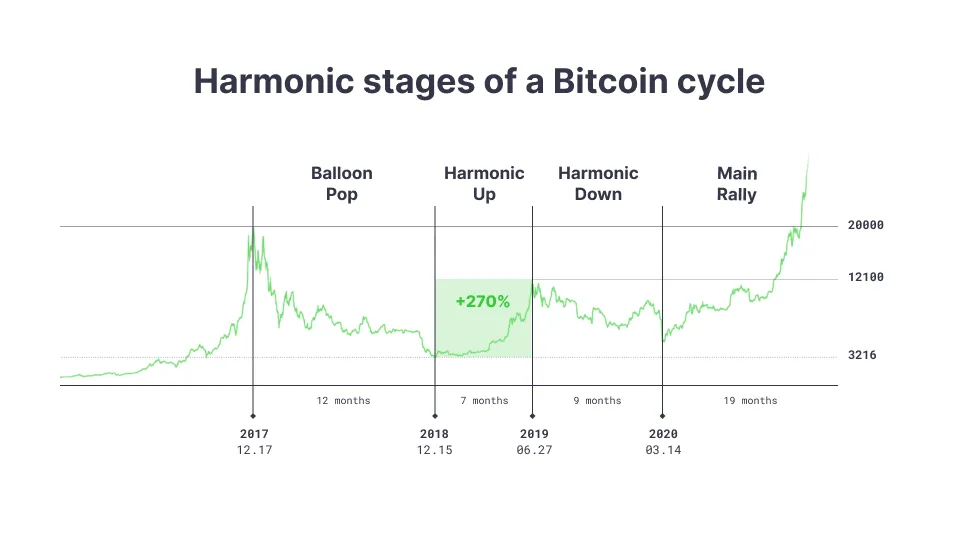The String Theory of Bitcoin predicts two more months of price rally
We are witnessing an astonishing rally in the cryptocurrency market, with BTC price increasing more than 68% during the last 90 days.
 The rally is much older and much greater than the recent bull run on the banking crisis. Only 13% can be attributed to the crisis as of 22 Mar 2023. Chart made with Stereotic Explore.
The rally is much older and much greater than the recent bull run on the banking crisis. Only 13% can be attributed to the crisis as of 22 Mar 2023. Chart made with Stereotic Explore.
Our new theory suggests that the recurring shock of the four-year Bitcoin halving — A sudden event when the inflation of Bitcoin halves — triggers not just great bull runs but also a wave-like resonance in the price of Bitcoin, akin to the vibrations of a string being plucked. This physical analogy helps us to understand the ongoing bull run better.
It is well-known that a plucked string has a natural frequency at which it vibrates, determined by its physical properties. However, there are also overtones that appear in the string’s vibration, known as harmonics. The first harmonic, for instance, is an intermediate, smaller wave that emerges during half of the plucking cycle, at the bottom of a bear market.
 Bitcoin price exhibits harmonic waves after plucked by the 4-year recurring halvings
Bitcoin price exhibits harmonic waves after plucked by the 4-year recurring halvings
This phenomenon was clearly observed during the bear market of 2018–2019. After hitting its lowest point in December 2018, Bitcoin rose more than 270% in just 7 months to reach $12,100. Then the price slowly went back down again, before the halving on 11 may 2020 initiated the new bull run. We can divide the four-year cycle into four harmonic stages.

The first stage is the “balloon pop” which lasts from the ATH to the cycle’s low point. The second stage is the rising trend of the “first harmonic”, the third one is the downtrend of the harmonic, followed by the next “main rally” that ends the cycle.
In the current bear market, we can once again observe the first harmonic in action.

On November 22nd, 2022, Bitcoin fell to 15,800, then in less than four months, it rose 77% to 26,000. But this is still only 40% of its all-time high, so there is more room upwards.
The most exciting question is:
How high this harmonic wave can rise?
Last time it went up to 60% of the at-the-time all-time-high, which yields the prediction of $41,000 for the current harmonic. But we are living in a different world today, and we are in the midst of a financial crisis, so the harmonic peak may be very different.
Can it go to 1,000,000? Hopefully not now, as the world is not prepared.
The crucial question is not the height of the rally, but rather the timing:
When can we expect the harmonic peak?
The simple calculation is as follows:
The 2019 harmonic peak was 559 days in that bear market. Assuming the exact same timing for the current bear market yields 23 may 2023 for the harmonic peak date.
Since we have already passed the balloon pop and entered the uptrend of the first harmonic in the current cycle, we can add more detail to the prediction by comparing our progress stage by stage. As the bottom of the Pop was a month later than last time, we may think that the harmonic up will also end later, going well into June.
Of course, interpreting the data is always subjective, and another analyst may have different insights. Yogi Berra was right that “It’s though to make predictions, especially about the future”.
About the author
Krisztián Schäffer is the founder of Stereotic.com, a new investing platform looking for angels. @KS_Stereotic on Twitter. He holds Bitcoin and other crypto assets in his portfolio.
This article is not financial advice.


